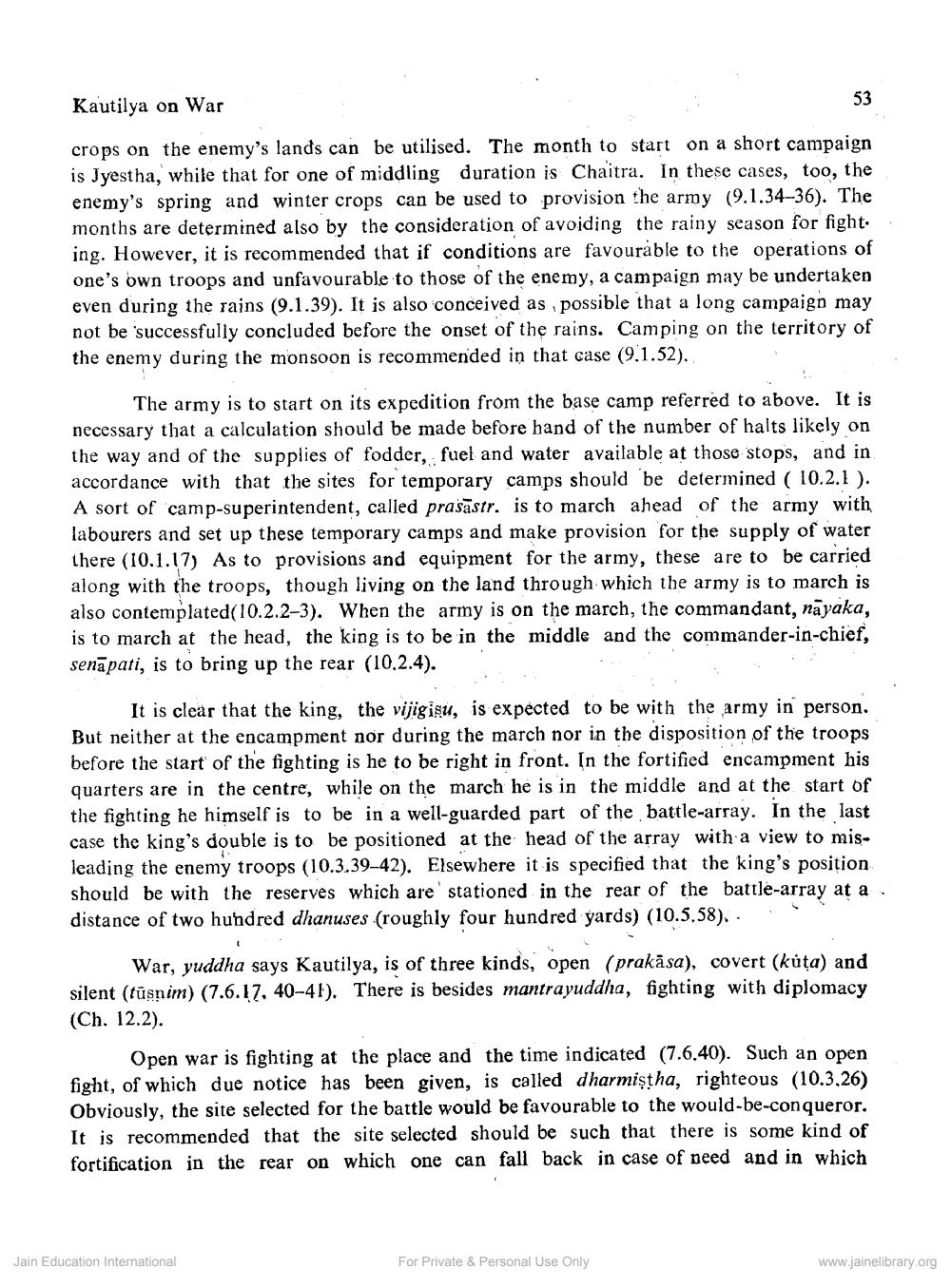________________
Kautilya on War
crops on the enemy's lands can be utilised. The month to start on a short campaign. is Jyestha, while that for one of middling duration is Chaitra. In these cases, too, the enemy's spring and winter crops can be used to provision the army (9.1.34-36). The months are determined also by the consideration of avoiding the rainy season for fight ing. However, it is recommended that if conditions are favourable to the operations of one's own troops and unfavourable to those of the enemy, a campaign may be undertaken. even during the rains (9.1.39). It is also conceived as possible that a long campaign may not be successfully concluded before the onset of the rains. Camping on the territory of the enemy during the monsoon is recommended in that case (9.1.52).
53
The army is to start on its expedition from the base camp referred to above. It is necessary that a calculation should be made before hand of the number of halts likely on the way and of the supplies of fodder, fuel and water available at those stops, and in accordance with that the sites for temporary camps should be determined (10.2.1). A sort of camp-superintendent, called prasastr. is to march ahead of the army with labourers and set up these temporary camps and make provision for the supply of water there (10.1.17) As to provisions and equipment for the army, these are to be carried along with the troops, though living on the land through which the army is to march is also contemplated(10.2.2-3). When the army is on the march, the commandant, nayaka, is to march at the head, the king is to be in the middle and the commander-in-chief, senapati, is to bring up the rear (10.2.4).
It is clear that the king, the vijigiau, is expected to be with the army in person. But neither at the encampment nor during the march nor in the disposition of the troops. before the start of the fighting is he to be right in front. In the fortified encampment his quarters are in the centre, while on the march he is in the middle and at the start of the fighting he himself is to be in a well-guarded part of the battle-array. In the last case the king's double is to be positioned at the head of the array with a view to misleading the enemy troops (10.3.39-42). Elsewhere it is specified that the king's position. should be with the reserves which are stationed in the rear of the battle-array at a distance of two hundred dhanuses (roughly four hundred yards) (10.5.58). -
War, yuddha says Kautilya, is of three kinds, open (prakāsa), covert (kuta) and silent (füsnim) (7.6.17, 40-41). There is besides mantrayuddha, fighting with diplomacy (Ch. 12.2).
Open war is fighting at the place and the time indicated (7.6.40). Such an open fight, of which due notice has been given, is called dharmistha, righteous (10.3.26) Obviously, the site selected for the battle would be favourable to the would-be-conqueror. It is recommended that the site selected should be such that there is some kind of fortification in the rear on which one can fall back in case of need and in which
Jain Education International
For Private & Personal Use Only
www.jainelibrary.org




